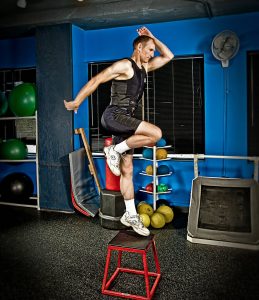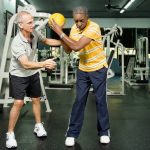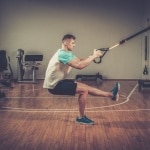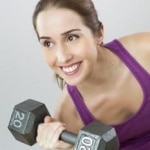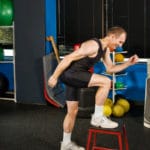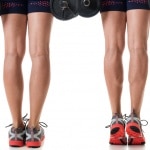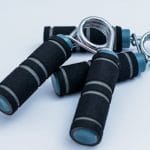 November 2023
November 2023
Exercise Dermatology for Aging Skin
Aerobic exercise (AE) is a proven modality for cardiovascular, metabolic, orthopedic, and psychological health. Resistance, or strength, exercise (RE) is a proven modality for improving strength, power, function, and even many of the above-mentioned systems benefited by AE. But skin? Come on now!
However, one study has shown that AE stimulated interleukin 15 (IL-15) “which regulates skin aging by enhancing mitochondrial biogenesis in the skin”. (Asleep yet?)
As skin ages, it loses it’s elasticity (sags more) and dermal thickness decreases (bruises easier). Both AE and RE have positive effects on various factors that might benefit aging skin. A Japanese study of 56 healthy sedentary middle-aged women compared the circulating levels of some of these factors.
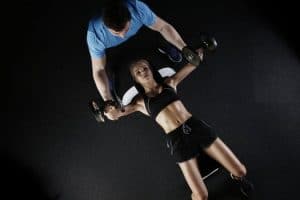
A 16-week intervention of 2/wk cardio or strength training was completed. At baseline, both groups were similar in age, diets, skin aging properties, body composition, and fitness. As you’d expect, the AE group improved aerobically while the RE group had “significantly increased lean soft tissue mass” and strength.
Skin elasticity and upper dermal structure improved equally in both groups; dermal thickness increased in the RE group only.
Circulating values of 28 factors improved and 41 decreased in the AE group; the RE group had improvements in 34 and decreases in 27 factors. Thus, both AE and RE had positive effects suggesting skin would benefit from a well-rounded fitness regimen that includes cardio and strength work.
Scientific Reports June 2023
Post-ACL Repair Deficiencies Have Dire Consequences
When someone tears the anterior cruciate ligament (ACL) of the knee, they lose a primary passive restraint against excessive rotation and extension. That means the knee joint is looser in two functional directions which can – will – lead to damage of the cartilage that covers the end of the femur as well as to the menisci, the two thick, disk-shaped cartilages that act as shock absorbers and stabilizers of the knee joint itself.
However, after surgical repair and therapy, persistent deterioration occurs faster than in the non-injured knee. Why?
A multi-center study aimed to assess the functional elements of the muscles that move the knee – the extensors (front of thigh: quadriceps) and flexors (back of thigh: hamstrings.) They wanted to determine if and to what extent these muscles fire during gait in order to identify features of pathological gait. Thus they looked at the “rate of knee loading, cumulative knee load, or the timing of motor input surrounding peaks” at 6 and 24 months post-ACL reconstruction.
They found that the hamstrings had a slower rate of muscle force development (RMFD) and smaller knee flexion impulse at initial ground contact plus longer quadriceps latencies (later activation) at 6 months; and lower peak rate of force development as well as lower hamstring flexion moment impulse at 24 months “may characterize neuromuscular deficits underlying aberrant gait mechanics early” after repair.
These muscular dysfunctions may, ultimately, contribute to the not-uncommon asymmetrical gait that is believed to cause degenerative changes seen in knee cartilage leading to osteoarthritis. The potential for a well-designed and lengthier rehab process to reduce the risk of OA must be considered.
MSSE June 2022
Tid Bits
The obesity crisis is plane-demic. The more an airplane weighs, the more fuel it burns; with labor costs, these are the two largest expenses for an airline. A recent study shows that United Airlines could save $80M/year simply by having passengers who weigh 10 lbs less. This does not even address how much healthier those passengers would be nor how much more comfort they’d have sitting in ever-shrinking airplane seats. Bloomberg 9/29/23
We all suspect that excess TV-watching is detrimental to our bodies but no one has looked at childhood and adolescent TV habits and adult coronary artery function in adulthood. A longitudinal Raine Study collected TV watching data on subjects at ages 5, 8, 10, 14, 17, and 20. Three groups were created: Low TV (<14 hrs/wk), Hi TV (>14 hrs/wk) and Increasing TV (changing from Low to Hi). At age 28, subjects were invited to have their arm and leg arteries evaluated. The results ”suggest” that youthful TV habits “may have legacy impacts on artery function at age 28 yrs, particularly in females.” MSSE Sept. 2023
A consensus statement of medical and rehabilitation experts (JOSPT Sept. 2023) looked at 35 psychological and psychosocial constructs to determine which should be considered in working with patients with tendinopathies like tennis and golfers elbow, patellar tendinitis, and rotator cuff pain. Four constructs were deemed ‘critical to include’: kinesiophobia (fear of certain movements), pain beliefs (how much or how bad you think the treatments will be), pain related to self-efficacy (confidence about one’s ability to manage the therapy and pain), and fear avoidance beliefs (willingness to confront the therapeutic procedures and to engage in activities that might re-injure the joint.) Therapists should be aware of these psychological constructs to help patients recover from injury, surgery, and rehab itself.

